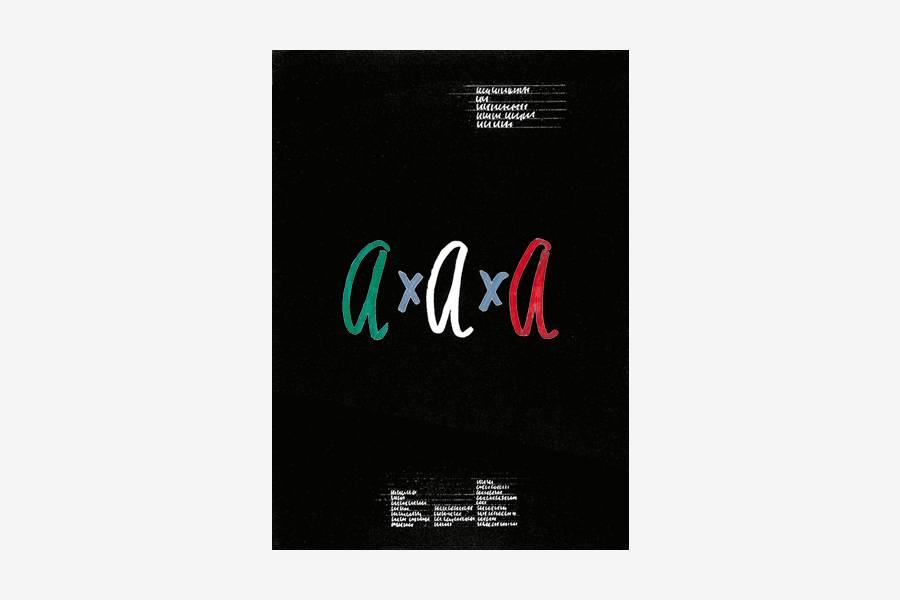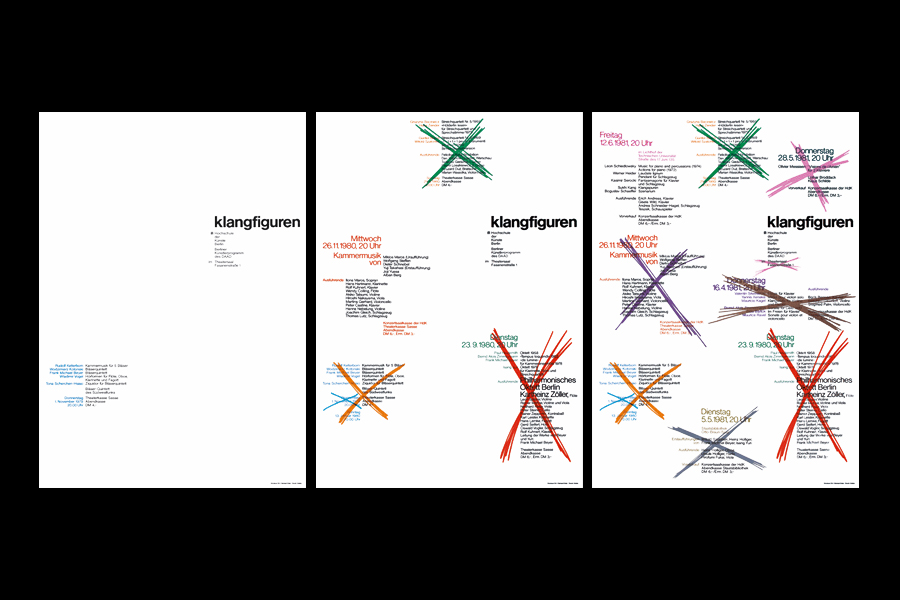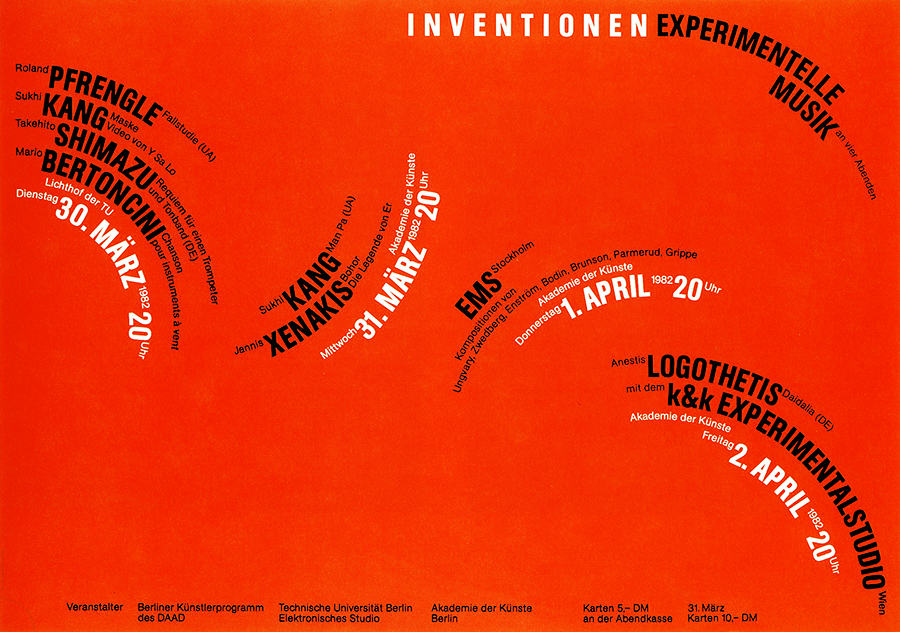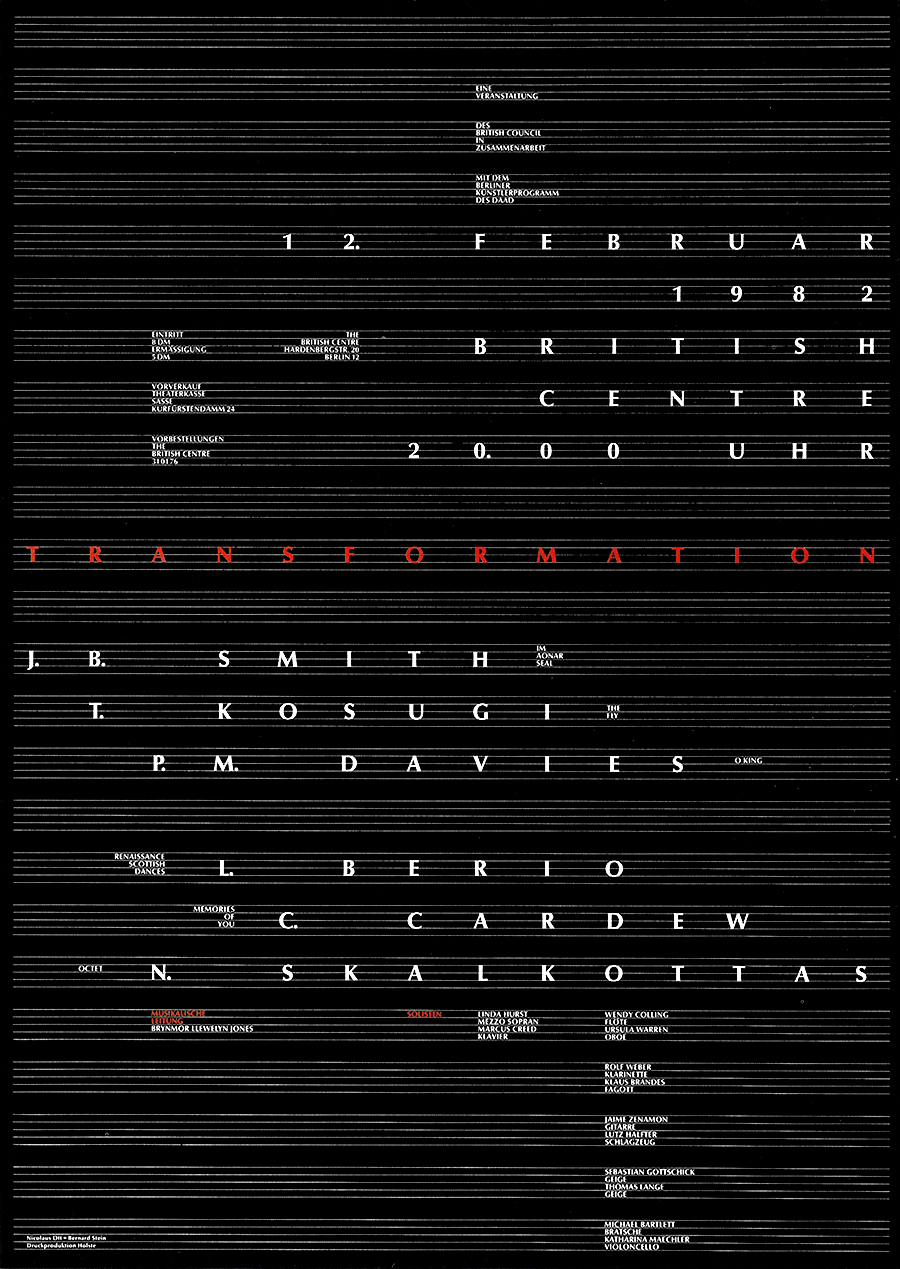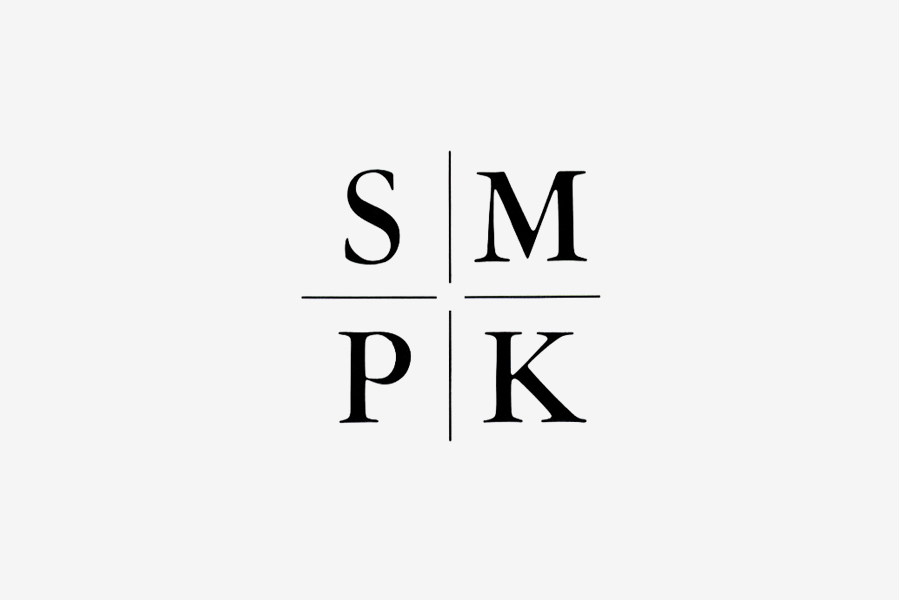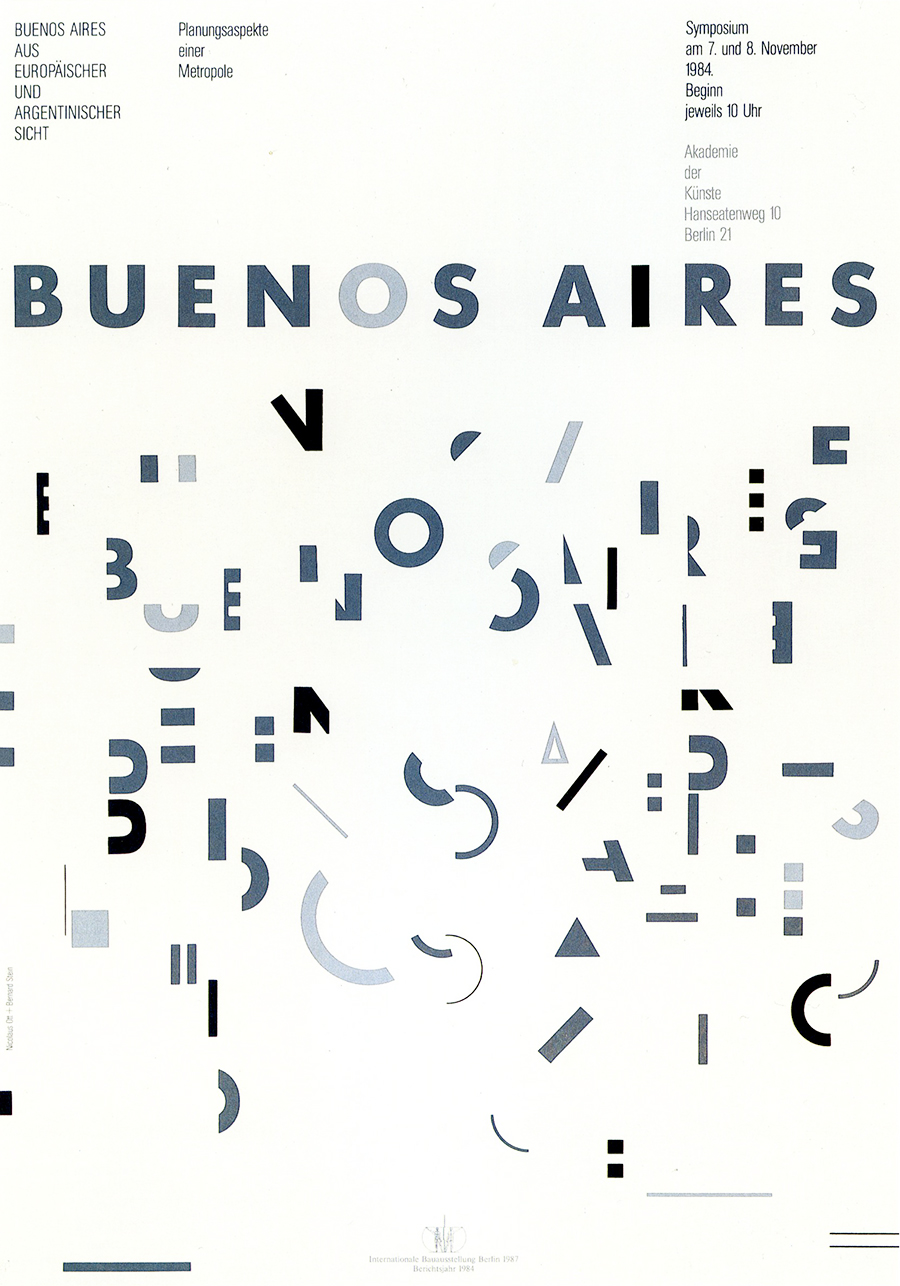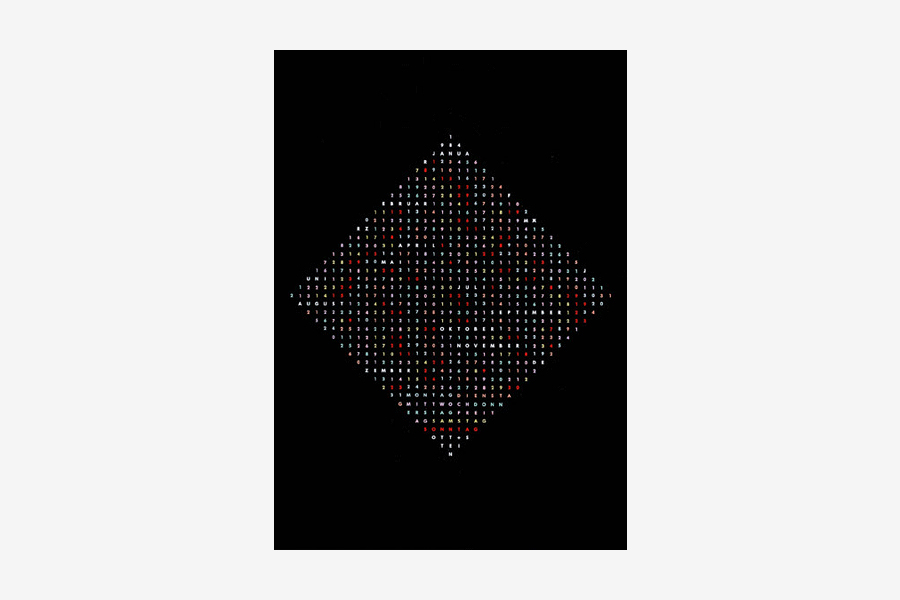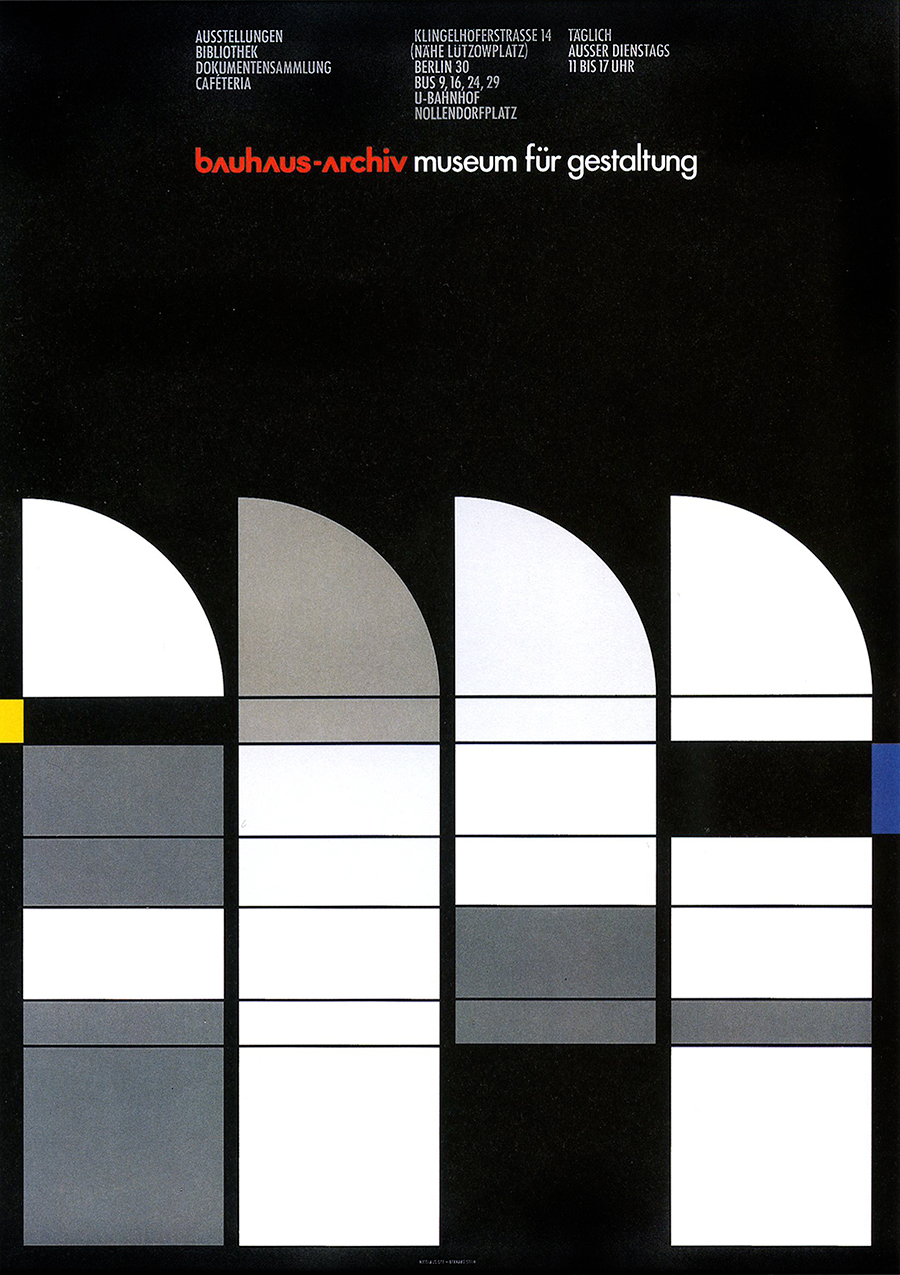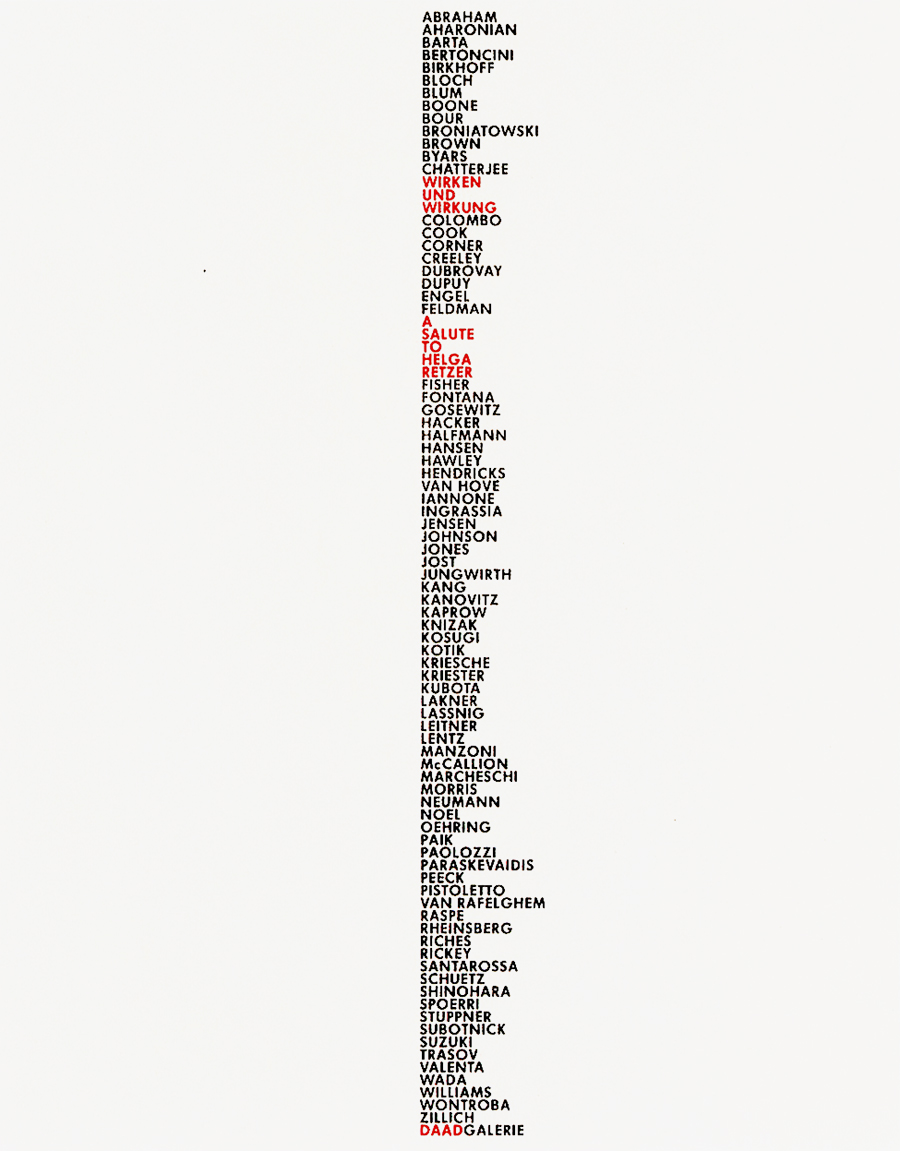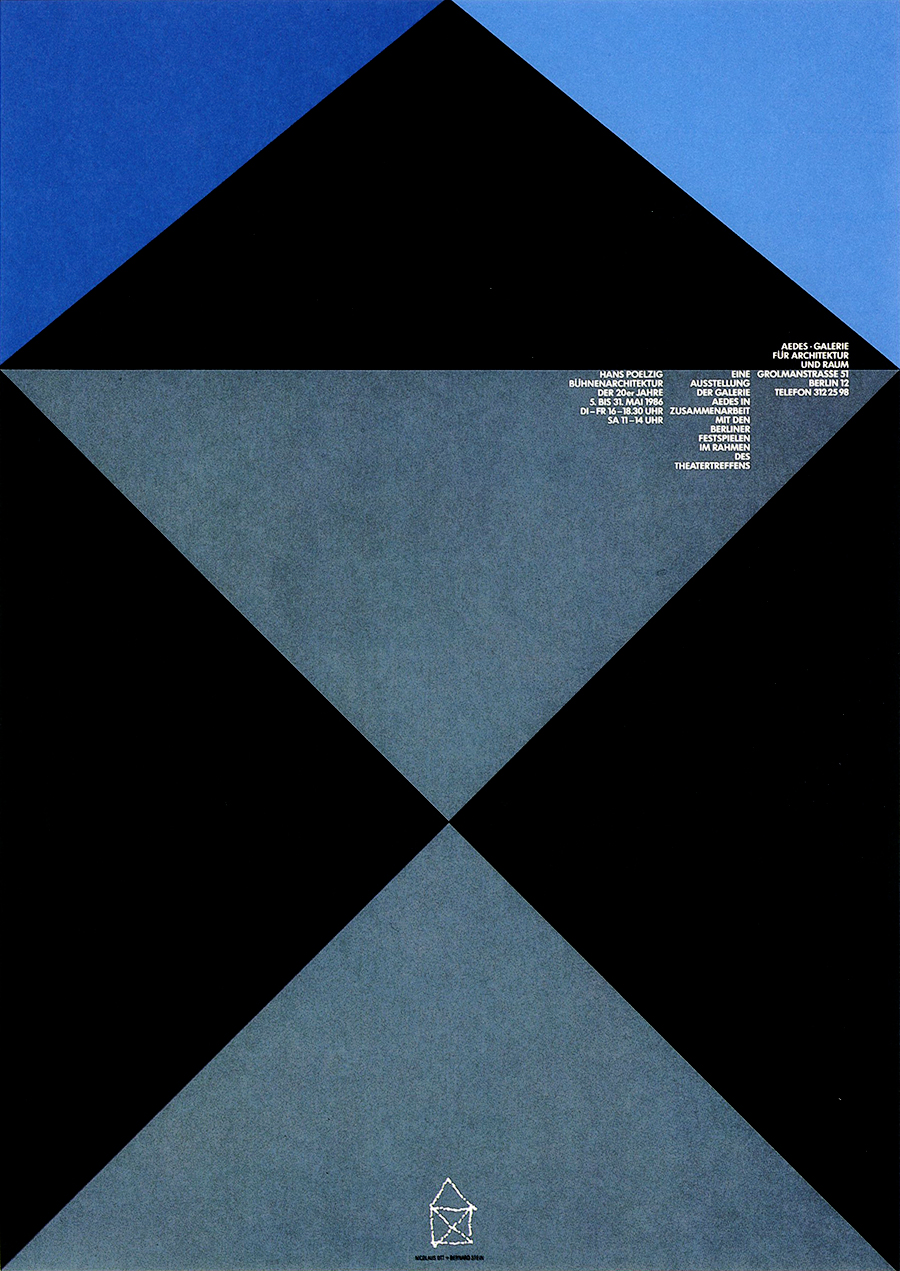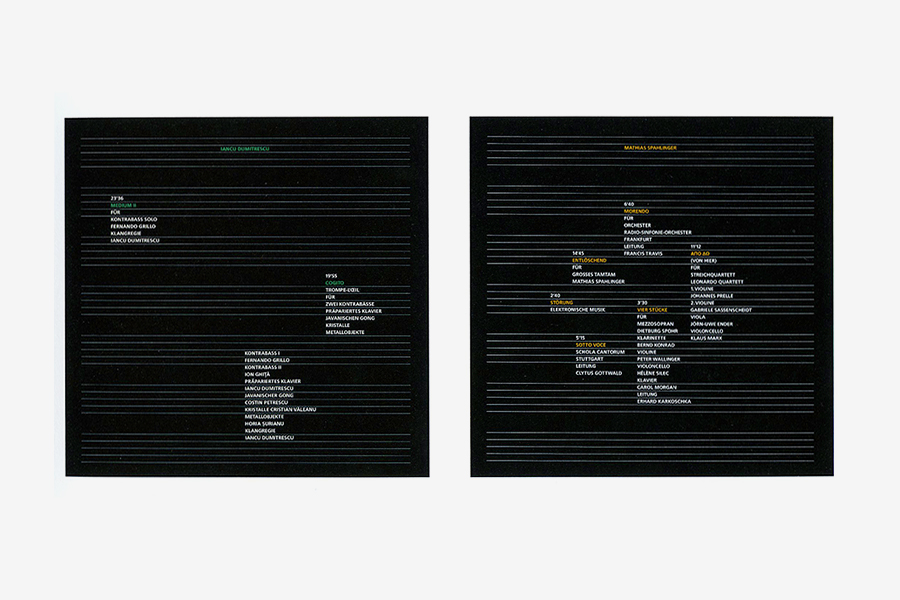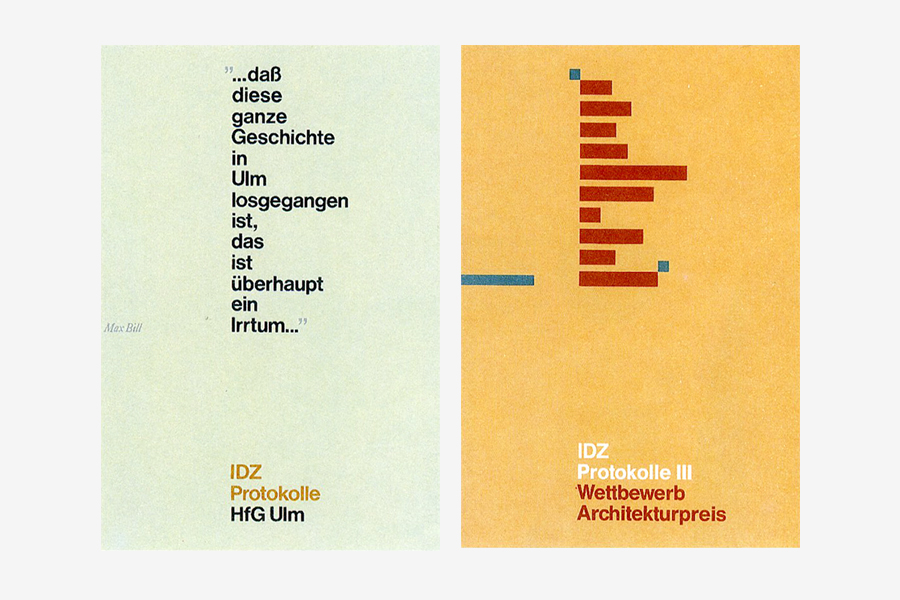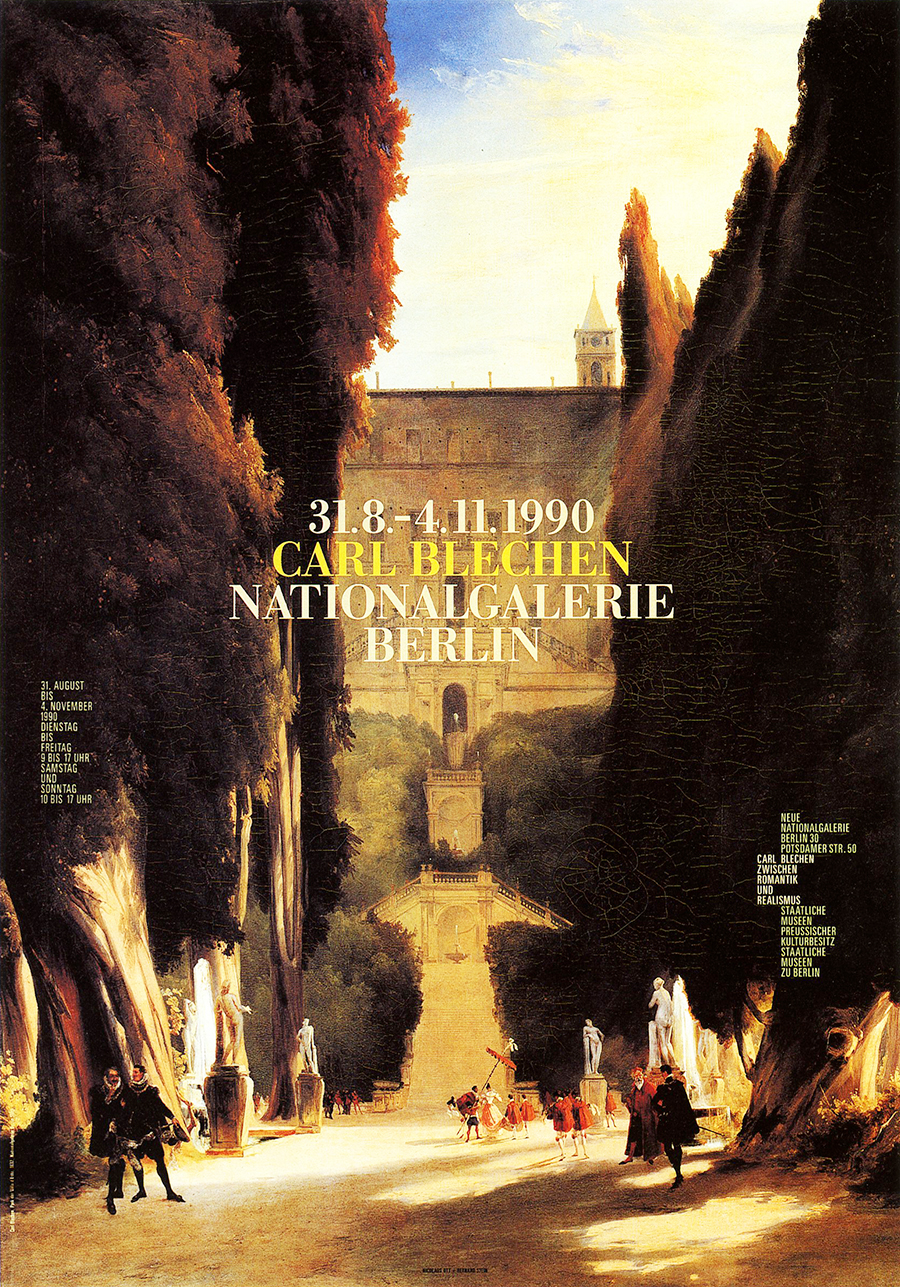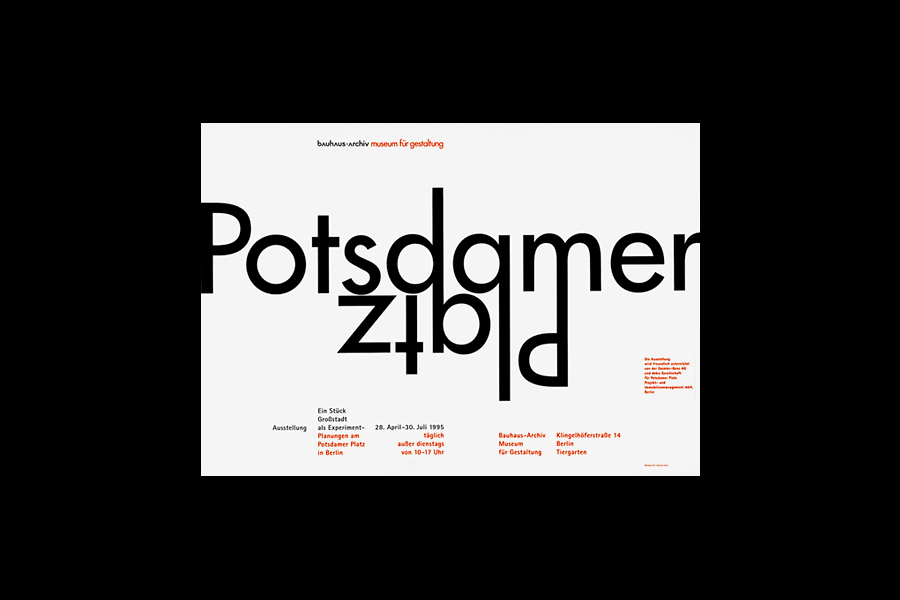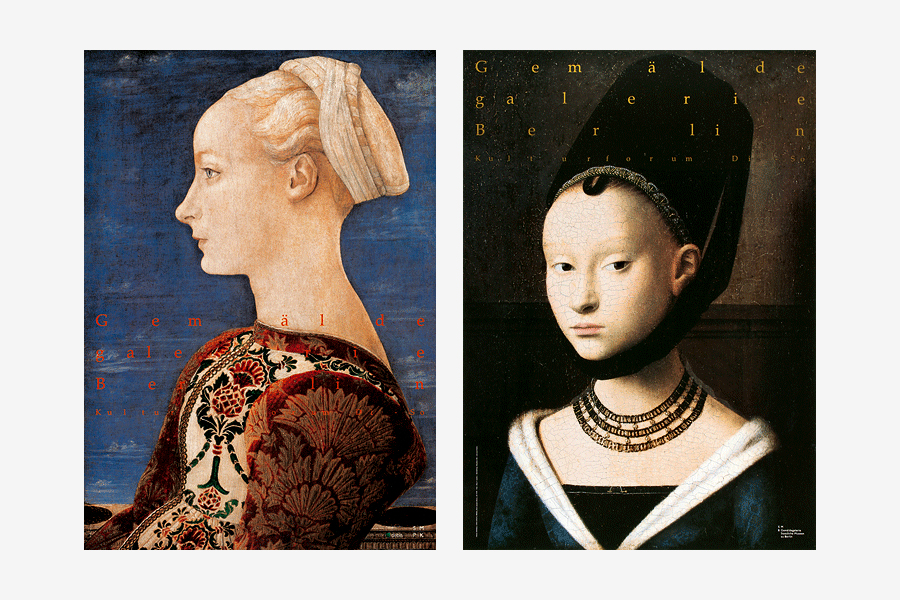Bernard Stein
Berlin, Germany, 1949
Who’s Who
Bernard Stein is a prominent german graphic designer.
He graduated in 1977 from the Hochschule der Künste (University of Arts) in Berlin, studying under Helmut Lortz, a master of german graphic design.
The year later he cofounded Ott+Stein with his schoolmate Nicolaus Ott. It soon became one of Berlin’s best-known design firms working for prestigious clients from the cultural field. The list includes the Bauhaus Archive, Berliner Kammeroper, BDA (Association of German Architects), BDG (Association of German Graphic Designers), IDZ (Internationales Design Zentrum), and SMPK (National Museums of Berlin).
In 2004 he was appointed creative director on the management board of Meta Design, an international design company originally founded by the well-known typographer Erik Spiekermann.
His work is always very specific to the subject in terms of both means and meanings. It shows to be the product of a remarkable cultural sensitivity which produces a rich graphic variety, that perfectly identifies the different subjects in unique and appropriate forms.
During the early 1980s he lectured and taught at the Hochschule der Künste (University of Arts) in Berlin. Since 1998 he is professor in poster design and visual communication at the School of Arts and Design of the University of Kassel.
Member of AGI (Alliance Graphique Internationale) and member of the Architekturpreis Berlin since 2007. Member of the Deutscher Werkbund Berlin since 2008. His work is part of the permanent collection of major museums including the MoMA (Museum of Modern Art), New York. He had exhibitions in Berlin, Essen, Hamburg, Munich, and at the DDD Gallery in Osaka.
Together with Nicolaus Ott he published several books including “Typo” (Könemann, 1998) a typographic encyclopedia.
Enjoy your reading,
 TO THE TOP ↑
TO THE TOP ↑
Q&A
Published Apr 13, 2014
Recorded Nov 18, 2013
What did you want to do when you were growing up?
I really must admit that I had no idea of what I wanted to be, since I was too busy growing up.
What was your educational path?
After attending all regular stages of school, I have started looking around for what to study and could not decide. Then I have found Helmut Lortz, who was the first german member of the AGI (Alliance Graphique Internationale) in 1954, and got my education through him at the Hochschule der Künste (University of Arts) in Berlin.
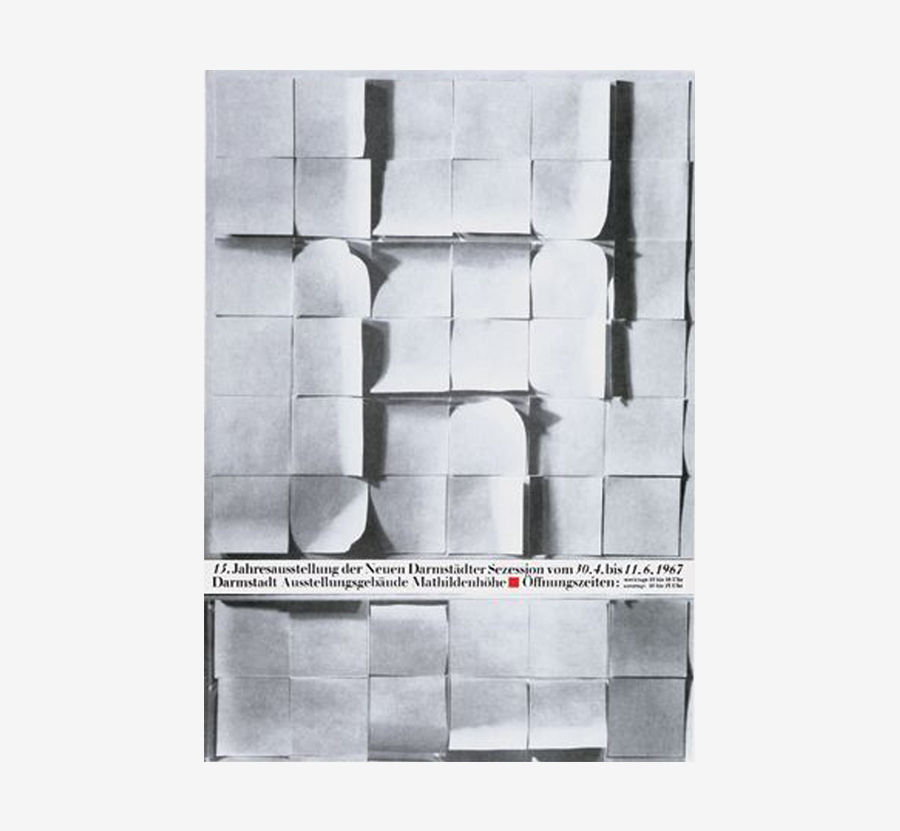 Helmut Lortz, Neuen Darmstädter Sezession, 1967, poster.
What was your favorite subject at school?
Helmut Lortz, Neuen Darmstädter Sezession, 1967, poster.
What was your favorite subject at school?
Depending on the teacher, my favorite subject switched from sports to geography, art, mathematics, and finally to german literature.
When and how did your career start?
On January 1st, 1978, when I found the perfect person to work with in Nicolaus Ott.
How did your design evolve since that time?
In a very similar way as I evolved as a person.
A book that was important for you as a designer?
Milton Glaser’s book “Graphic Design” (The Overlook Press, 1983). Not because of his fantastic work, but because of his mind-opening subtitles to each work.
What kind of projects do you prefer to work on?
Projects in which the people I work with and for are interested in what they are doing.
A project you would like to design.
Any project where I can actually feel the commitment and the participation of everybody who is involved.
A designer whose work you admire.
Cassandre.
[Note: Born Adolph Mouron (1901-1968), actually he was an advertising artist, not a designer.]
A piece of architecture.
Any room I feel comfortable in with a window facing trees.
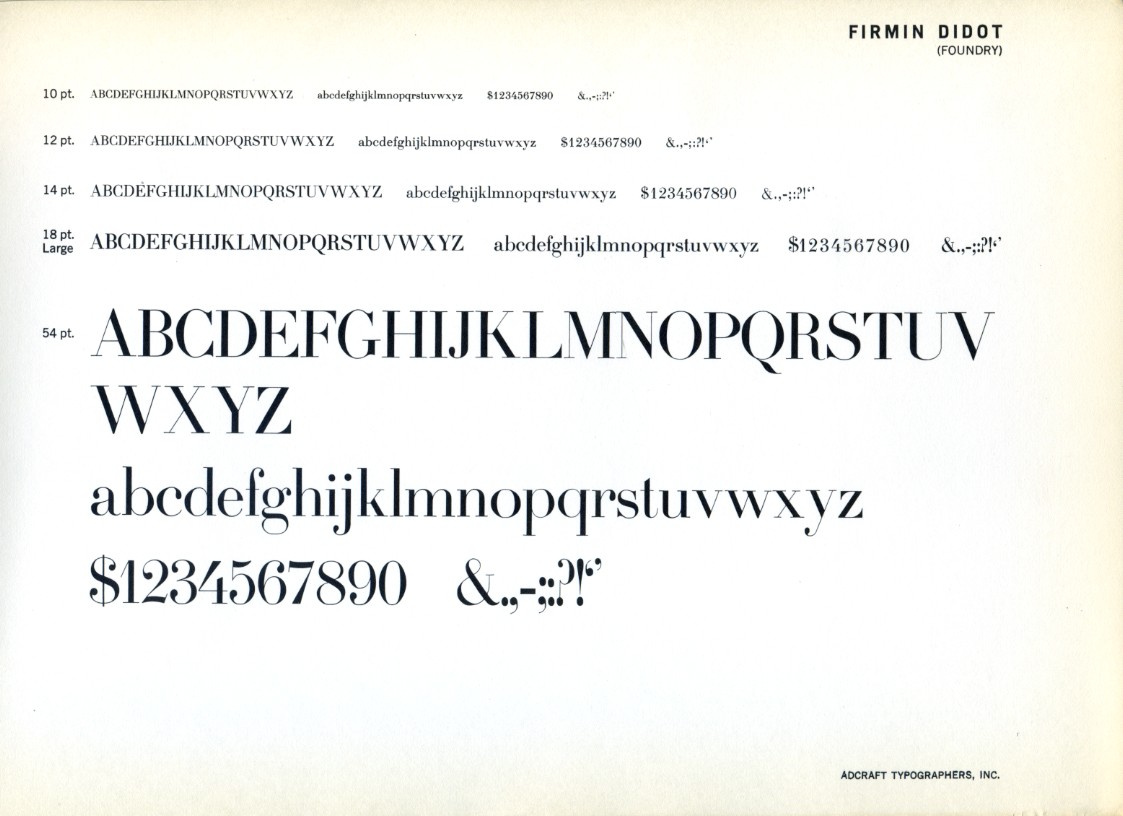 Firmin Didot by Ludwig & Meyer, 1927.
A typeface.
Firmin Didot by Ludwig & Meyer, 1927.
A typeface.
Didot.
How do you approach the design of a new project?
Asking questions until I am interested.
Without considering technology, what do you think are the main differences between the design from the past and the current one?
When I have started to work, graphic design used to be 83% handcraft and legible information, 11% ideas and understandable communication. The rest was a mystery. Now the mystery has become much bigger.
Has the way people perceive the design changed?
Very much. Graphic design is now an accepted but mysterious way to express yourself, the others, and the world.
What would you recommend to a young designer?
Read good books, listen to good music, going to good theater plays, walk, swim, ride a bicycle, talk to friendly people.
What was your favorite game when you were a child?
Monopoly.
Thank you.
Thanks.
© 2013-16 Bernard Stein, Nicola-Matteo Munari. All rights reserved.
TO THE TOP ↑
Portfolio
AAA
Draft Poster, c.60×40 cm
1978
Sketch for the exhibition “Rationalism and Architecture in Italy” held at the Hochschule der Künste Berlin (University of the Arts).
Klangfiguren
Poster Series, c.60×40 cm each
1980
Series of nine subsequent posters where the next follows the graphics of the previous one. Designed for the Berlin Artists Program issued by the DAAD (German Academic Exchange Service).
Isolationen
Poster, c.80×60 cm
1981
Poster for the Berliner Kammeroper. The layout perfectly communicates the message, and the idea of solitude is emphasized by the emptiness of the black background.
Inventionen
Poster, c.80×60 cm
1982
Series of posters for the Berlin Artists Program issued by the DAAD (German Academic Exchange Service). It communicates a beautiful sense of rhythm and dynamism.
Transformation
Poster, c.80×60 cm
1982
Poster for the British Council. An elegant typographic layout arranged as a music score.
SMPK
Mark
1983
Mark for the SMPK—Staatliche Museen Preußischer Kulturbesitz (Museums of Berlin). In 1992 Ott+Stein redesigned it substituting Amsterdamer Garamont with Gill Sans.
Buenos Aires
Poster, c.80×60 cm
1984
“Buenos Aires from european and argentine points of view. Planning aspects of a metropolis.” For a conference at the Akadamie der Künste (Academy of Arts), Berlin. The two ways of displaying the name of the city also reveal the two different points of view: the european and the argentine.
Ott+Stein
Calendar, c.60×40 cm
1984
Bauhaus Archive
Poster, 84×59.5 cm
1985
The poster portrays the shed roof silhouette of the Bauhaus Archive (Museum of Design) Berlin, 1976-79, originally designed by Walter Gropius.
A Salute to Helga Retzer
Poster, c.80×60 cm
1985
“Action and Effect. A Salute to Helga Retzer.” Poster in memory of Helga Retzer, co-founder of the Architekturforum Aedes, former Head of the Berlin Artists Program issued by the DAAD (German Academic Exchange Service). Previously unseen on the internet.
Hans Poelzig
Poster, c.80×60 cm
1986
Poster for an exhibition dedicated to the theatre stages designed by the german architect Hans Poelzig (1869-1936). Designed for the Galerie Aedes, Berlin.
Edition RZ
Vinyl Jackets, 30×30 cm each
1987
Two record jackets from a series designed for Edition RZ (Robert Zank), a german music label based in Berlin. Typography is elegantly arranged on a music score. On the left: “Medium II” by Iancu Dumitrescu. On the right: “Morendo” by Mathias Spahlinger.
IDZ Protokolle
Books, c.21×15 cm each
1987
Book series for the IDZ (Internationales Design Zentrum). On the left, the first volume dedicated to the “HfG Ulm.” On the right, the third volume titled “Architectural Award Competition.”
Carl Blechen
Poster, c.80×60 cm
1990
Exhibition poster for the Nationalgalerie, Berlin. Previously unseen on the internet.
Potsdamer Platz
Poster, c.60×80 cm
1995
Exhibition poster for an exhibition held at the Bauhaus Archive, Berlin.
Gemäldegalerie
Posters, c.80×60 cm
1998
From a series of posters for the Gemäldegalerie (Art Museum) in Berlin. On the left: “Portrait of a young girl” by Pollaiuolo, 1465. On the right: “Portrait of a young girl” by Petrus Christus, 1470.
Links & Docs
Profiles
Ott+Stein Official Website
Ott und Stein Projekt-Klasse
Wikipedia Ott und Stein
Projects
Discogs Vinyl Jackets
Videos
TGM Wort wird Bild wird Sinn wird Was?
YouTube Designmai 2009
TO THE TOP ↑
Comments
If you wish to add a comment please feel free to write at
info@designculture.it
TO THE TOP ↑
Follow on Facebook
Partnerships

Archivio Grafica Italiana is the first digital resource to the Italian graphic design heritage. Founded by Nicola Munari in 2015.

Design consultancy based in Piacenza, Italy. Founded by Nicola Munari in 2015, it operates in the whole field of design.
TO THE TOP ↑
© 2013-16 Nicola-Matteo Munari. All rights reserved.

 Helmut Lortz, Neuen Darmstädter Sezession, 1967, poster.
Helmut Lortz, Neuen Darmstädter Sezession, 1967, poster.
 Firmin Didot by Ludwig & Meyer, 1927.
Firmin Didot by Ludwig & Meyer, 1927.
